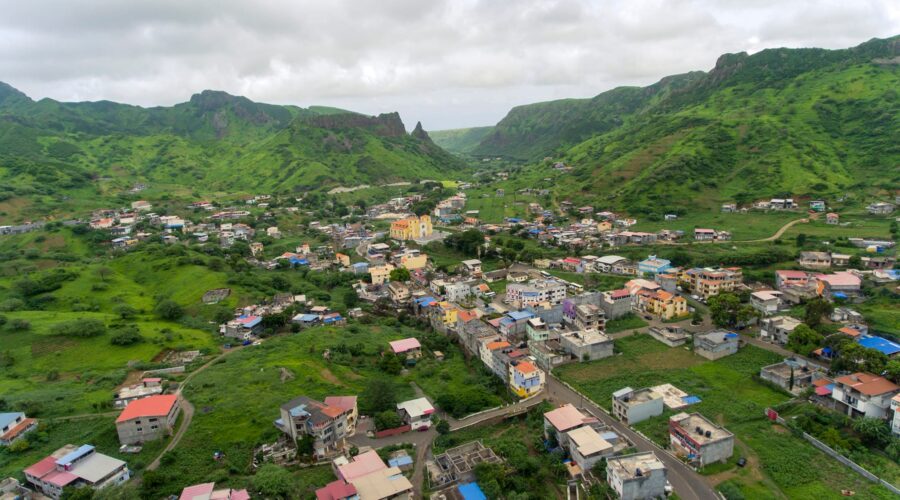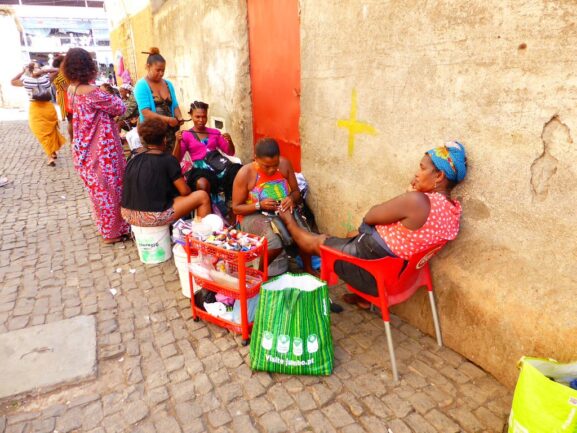São Domingos and its natural beauty marked by history, culture and flavors
To talk about São Domingos is also to talk about the small green vegetations scattered throughout the municipality. And the areas of Água de Gato, João Garrido, Rui Vaz and Achada Baleia are the ones with the most suggestive scenery for leisure and relaxation, precisely because there is a lot of farming and planting of fruit trees.
The Ecocentro space is also one of these places that offers a natural and direct connection with nature. Located right in São Domingos, this green space offers an attractive environment with various types of plants, including many endemic ones preserved by the owners of the space, thus providing a pleasant atmosphere and fresh air characteristic of rural areas, as well as attracting animals.
For information on the fauna and flora of the municipality of São Domingos, Charles Darwin was in Cape Verde, in this case in São Domingos in 1832, during his famous voyage aboard the HMS Beagle, which marked a crucial point in his journey of discovery and in the formation of his theory of evolution.
Although it was a brief stopover of just a few days, Darwin’s experience in Santo Domingo had a significant impact on his observations and reflections on the natural world.
Corn pastry and burning water production
More than places and people, we can’t stop talking about São Domingos’ famous corn pastry. This type of salty snack is practically the postcard of São Domingos. Many people make this type of pastry, but the best known is “Titina’s” corn pastry, one of the oldest vendors in the municipality.
So if you like a good salty snack, a stop in São Domingos is more than obligatory. In fact, practically every day, ordinary people, tourists, emigrants, students and drivers can’t resist a brief stop to buy this much-talked-about pastry.
At the same time, we can’t fail to mention the Água de gato area, which is also located in São Domingos and is the largest production point for burning water and its derivatives in the municipality. In this place alone, there are approximately 7 furnaces.
Another curious fact about this area is that there are 3 water wells there, while in the municipality there are around 6 (or a little more) natural water points or boreholes that supply practically the entire municipality all year round.
Ceramics, soccer and musical legacy
For many years, the city of São Domingos has been marked by its ceramics work since 1983. And for years, many tourists made short stops in the municipality to see and appreciate this kind of work. Today, although the dynamics are not the same, you can still visit the space where these works are produced and even buy something as a souvenir of the town.
As far as soccer is concerned, we have the well-known Rubon, one of the best spearheads in Cape Verde in the 90s. And since then, the passion for soccer among young people has only grown more and more, and many of them have played a lot of soccer in this municipality, especially in inter-zone soccer tournaments.
In musical terms, the faces of São Domingos are the late singer Ano Nobu and Intony Dente d’Ouro. The former stands out for its mornas and the latter for its batuque. And Ano Nobu, although he never recorded any of his musical compositions, his lyrics were interpreted by some renowned singers such as Ildo Lobo, Bana and Mário Lúcio, with the respective musical names: camarada pepe lope, linda and ta pinga txapu txapu – songs that are still very popular with good lovers of national music.
Similarly, we have the then singer Codê di Dona, one of the greatest exponents of funaná, who is also one of the faces of São Domingos, since he was born in this municipality, specifically in the Chaminé area, which is also a beautiful place to get to know and explore.
On a cultural level, the great reference is Manu Mendi, who was a builder and player of the cimboa, an instrument that has become a symbol of Cape Verdean identity. Although very little used nowadays, Manu Mendi was the one who contributed to the preservation and dissemination of this instrument, which is most commonly used in batuque, and has recently been used in other genres of music precisely because of its unique rhythm and distinctive melodies.



